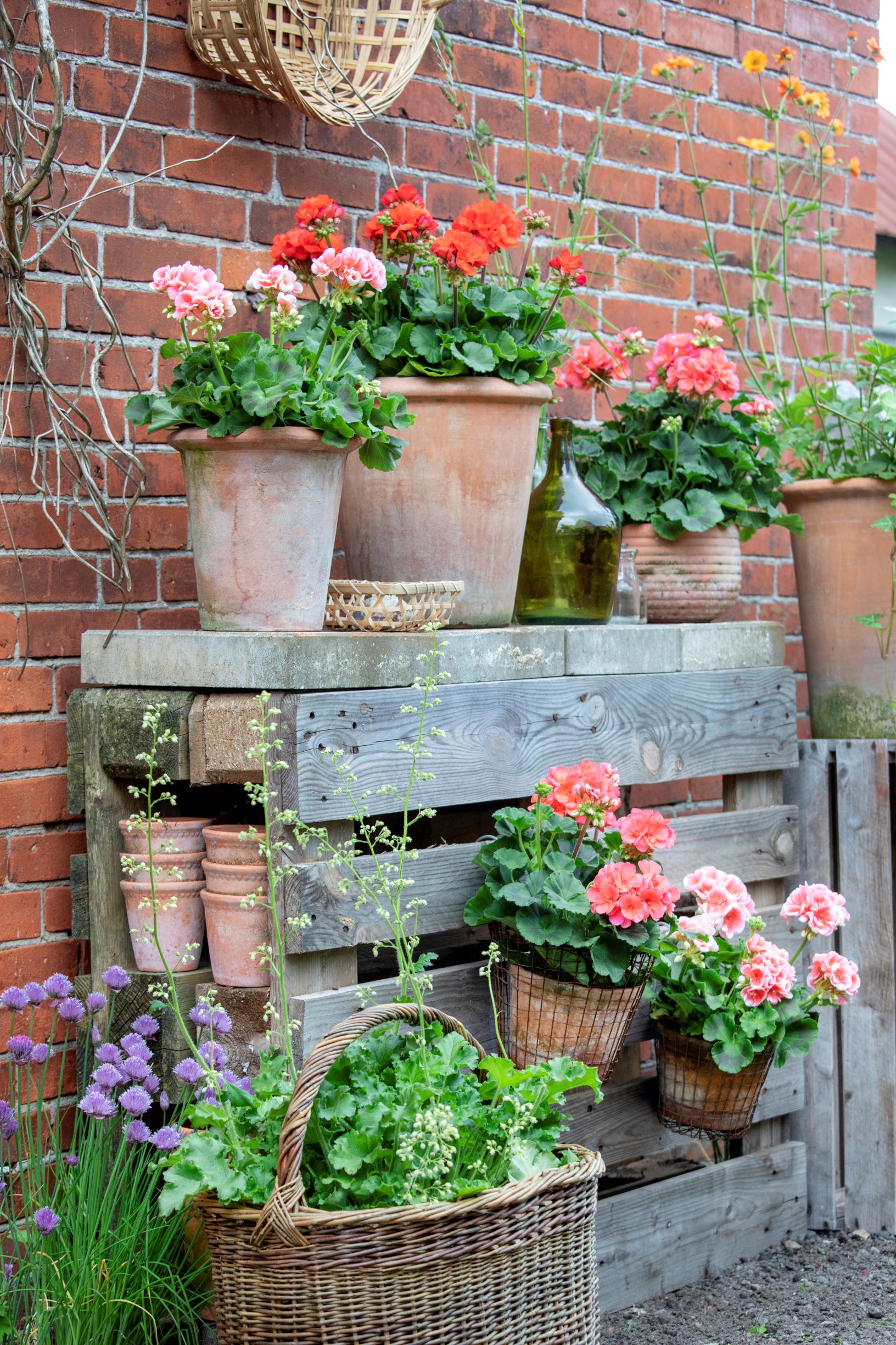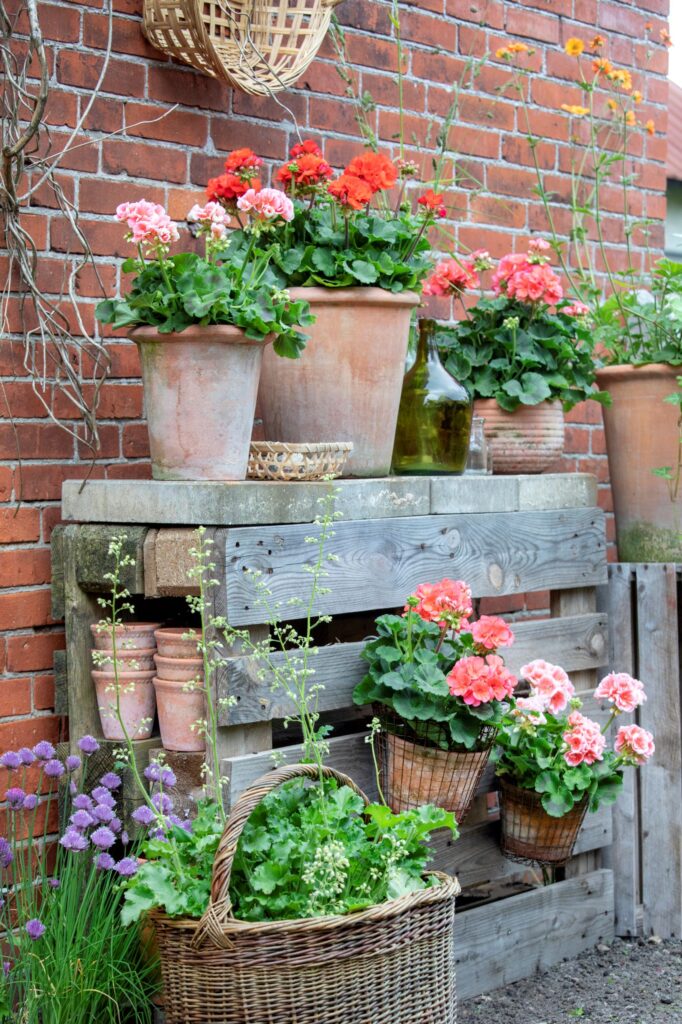 Robust plants that shrug off extremes of heat and drought are set to play an increasing role as households rise to the challenge of gardening in a warming climate, according to the experts at Pelargonium for Europe.
Robust plants that shrug off extremes of heat and drought are set to play an increasing role as households rise to the challenge of gardening in a warming climate, according to the experts at Pelargonium for Europe.
Climate change is tipped to change the way in which we garden as rising global temperatures, combined with more frequent weather extremes such as drought and heatwaves, influence gardeners’ choice of what to grow in the future.
Pelargoniums are renowned for their ability to thrive in hot, dry summers, hence their long-standing association with Mediterranean-style gardens. Now, these robust garden favourites are poised to become even more popular as gardeners turn to plants that reliably perform, bearing a profusion of flowers even during summers when growing conditions are less than favourable.
To separate climate change fact from fiction, Pelargonium for Europe is focusing on evidence from climate change authorities, to dig deeper into evidence on how global warming is set to affect our gardens and influence the choice of plants that we grow as more frequent weather extremes become the norm.
Preparing for summer drought
Several years ago, leading UK charity the Royal Horticultural Society (RHS) published a report called Gardening in a Changing Climate. Key projections included “an increase in the number of dry spells” over summer months, with implications such as: “Warmer springs and autumns will extend the growing season and, therefore, some species will flower earlier and some will experience delayed leaf fall”.
As pelargoniums are native to South Africa, plants are already well suited to surviving extremes of heat and drought, while they’re famous for a long flowering season, too. If predictions of milder, frost-free winters also become reality, pelargoniums will enjoy an even longer season of flowering than they do presently, with plants already renowned for blooming late into autumn, long after other summer bedding favourites have withered and gone to seed, flowering profusely right up until the frosts.
The consequences of milder winters drive demand for plants that offer high levels of pest and disease-resistance. It can require prolonged periods of sub-zero temperatures to successfully kill overwintering pests, so predictions of warmer winters raise the spectre of significant pest infestations in the future.
Shrugging off pest attacks
The good news is that pelargoniums are some of the most pest and disease-resistant plants that gardeners can grow. Slugs and snails, for example, consistently voted one of the worst plant-wreckers, often see populations bolstered by mild, wet winters. Fortunately, pelargoniums offer superb slug-resistance, as molluscs despise plants’ robust stems and thick, fleshy, unpalatable leaves. Instead, slugs and snails will make a beeline for other bedding plants, preferring to feast on their succulent young growth – leaving pelargoniums mostly untouched.
The RHS report also points out: “It is expected that warmer conditions will favour the spread of existing pests and diseases, in addition to aiding the establishment of new cases.” Again, pelargonium growers have little to worry about, as occasional infestations of sap-sucking insects such as whitefly can easily be controlled with organic bug killers. Plants are remarkably resilient during wet spells, too, and the risk of diseases such as grey mould can be reduced by providing good air circulation, which is easy to achieve by planting at moderate densities, leaving sufficient space between plants for good air flow. And while a summer deluge – another phenomenon that’s predicted to become commonplace with climate change – can knock many popular bedding plants for six, pelargoniums are renowned for their ability to emerge unscathed, proudly displaying their rounded clusters of vivid flowers throughout summer downpours.
Thriving despite climate change
How can we be confident that our climate is shifting to a pattern for hot, dry weather that’ll suit heat and drought-loving plants? When it comes to global warming, the facts speak for themselves. According to the National Centres for Environmental Information, which monitors average global temperatures, the warming trend started in the mid-1970s and has been gathering pace ever since. Worldwide, the warmest years have all taken place since 1998 – with the top 10 being 2016, 2019, 2015, 2017, 2018, 2014, 2010, 2013, 2005 (tied) and 1998, respectively. NASA has confirmed that 2016 was the warmest year on record, with most of the warming pattern occurring within the past 40 years – and the six warmest years on record have taken place since 2014.
While it is remains to be seen how the effects of climate change will impact the gardens of Europe in future decades, experts are confident that extreme weather events generated by rising global temperatures are increasing in frequency. Gardeners are widely regarded as custodians of the planet – growing drought and heat-resistant plants such as pelargoniums that will thrive in a warming climate will go a long way to ensuring that our gardens remain in full bloom, and that has to be great news for both human wellbeing and the wildlife that also calls our gardens their home.
[Pull-out box]
10 top tips to keep pelargoniums thriving, whatever the weather
1 Blooms of pelargoniums can begin to unfold as early as May, but don’t put these tender plants outdoors until the last frosts are over.
2 Plants should be at least 18cm high when planted out in the garden, and spaced approximately 20cm apart.
3 Pelargoniums are sun-worshippers (although some will tolerate some light shade). Grow in a location where plants can bask in the heat of the midday sun.
4 Rotate containers by 90 degrees each week, to avoid plants growing towards the sun. It will help to keep container plants uniform and balanced.
5 Water regularly throughout high season, ideally using rainwater collected from water butts.
6 It’s best to water early in the morning or just before dusk, when temperatures are cooler and moisture can be taken up slowly by roots. Avoid watering in the heat of the day, or you’ll risk scorching foliage.
7 Container-grown pelargoniums can develop a dense canopy that prevents rainwater from reaching the rootzone. Check container compost regularly to ensure it hasn’t dried out, even during wet weather.
8 Pelargoniums flower profusely but feeding using a balanced liquid fertiliser at least once a fortnight during the growing season will keep a succession fresh blooms coming.
9 Regular dead-heading of spent (finished) flower stems will ensure that plants channel all their energy into forming more flowers.
10 Although pelargoniums will carry on blooming well into autumn, they are not hardy, so bring plants into a light, frost-free place to overwinter, before night temperatures drop.
Find out more
You can find more information and pictures at www.pelargoniumforeurope.com. Reprint free of charge with reference to the “Pelargonium for Europe” image source, a copy is requested.
Pelargonium for Europe
Pelargonium for Europe is the marketing initiative of European geranium breeders Dümmen Orange, Elsner PAC, Florensis / P. van der Haak Handelskwekerij, Geranien Endisch, Selecta One and Syngenta Flowers. The initiative was founded in 2016 with the aim of promoting and securing long-term geranium sales in Europe. Its activities began in 2017 and in Germany, Austria, France, Italy, the Netherlands and Poland, activities are supported by the EU as part of the “Europe in Bloom” campaign.
Press contact
Press office Pelargonium for Europe
Hornby Whitefoot PR
Phone: 07851 610573
Mail: kimberley@hornbywhitefootpr.co.uk
Web: www.pelargoniumforeurope.com

